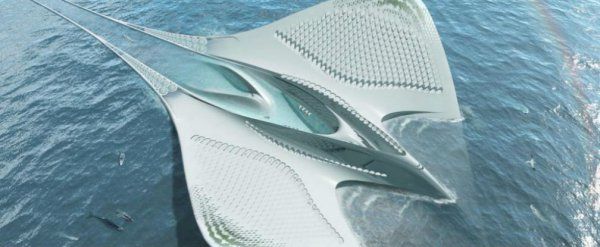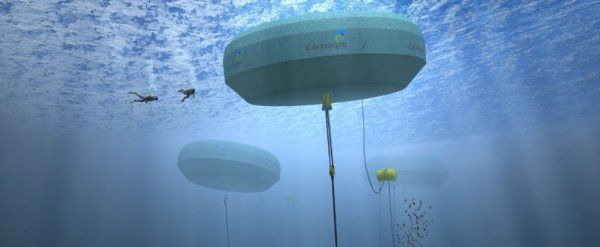The City of Mériens is a huge floating city designed by the French architect Jacques Rougerie. Its purpose is to provide a place for scientists who study marine life and the surrounding environment.
It is understood that this future research site is 900 meters long and 500 meters wide, and it can accommodate 7,000 scientists and students from all over the world and provide them with a series of laboratories, classrooms, lecture halls, living quarters, and specialties. Leisure activities and sports programs to facilitate their long-term research projects.

In an interview, Jacques Rougerie said: “Considering the size of the site and the size of the 7,000 people in the R&D team, I used the structure of the manta ray when designing the city of Mériens. This is the most satisfying requirement for so many people. Good design, and to ensure that the suspended city is stable enough."
The manta ray design was chosen because of its ability to withstand storms and other adverse weather conditions. Although the visible structure is 60 meters high, it can reach 120 meters deep underwater, which helps to keep Mériens The overall stability of the city.
In addition, the shape of the city of Mériens also allows scientists to set up a large reservoir in the center of the city for the placement of some mobile research equipment, and there are enough space on both sides of the channel to establish aquaculture farms. Here you can study a variety of marine life. Not only that, there is also a hydroponic greenhouse on the Manta Ray's wings, where residents can grow the fruits and vegetables they need.

Jacques Rougerie said: “This is an international city that implements UN standards management. The residents here will come from all over the world. It is designed for researchers, scholars and students who explore and study the ocean. Scientists will be here and The ocean maintains permanent connections and can also access the underwater world directly because part of the city is completely covered by sea level.â€
The design of the entire city is 100% sustainable. It can use self-sufficient marine energy and achieve zero waste. Although it is unclear how Jacques Rougerie plans to achieve such a goal, the city will use the grid-connected wave power method for energy, which has recently been realized on the west coast of Australia.

In February of this year, Myles Gough explained to us what is called grid-connected wave power generation: “The round underwater buoy holds the subsea pump unit installed at a depth of between 25 and 50 meters. The wave flushes the buoy and drives the pump and then adds Pressured seawater is sent to hydropower stations on land via submarine pipelines."
So far, the city of Mériens is still a purely conceptual design, but Jacques Rougerie himself hopes it will become a reality in 2050.
Komatsu Engine Parts,Komatsu Engine,Komatsu Engine Spare Parts,Engineering Machine Parts
JINING SHANTE SONGZHENG CONSTRUCTION MACHINERY CO.LTD , https://www.sdkomatsudozerparts.com